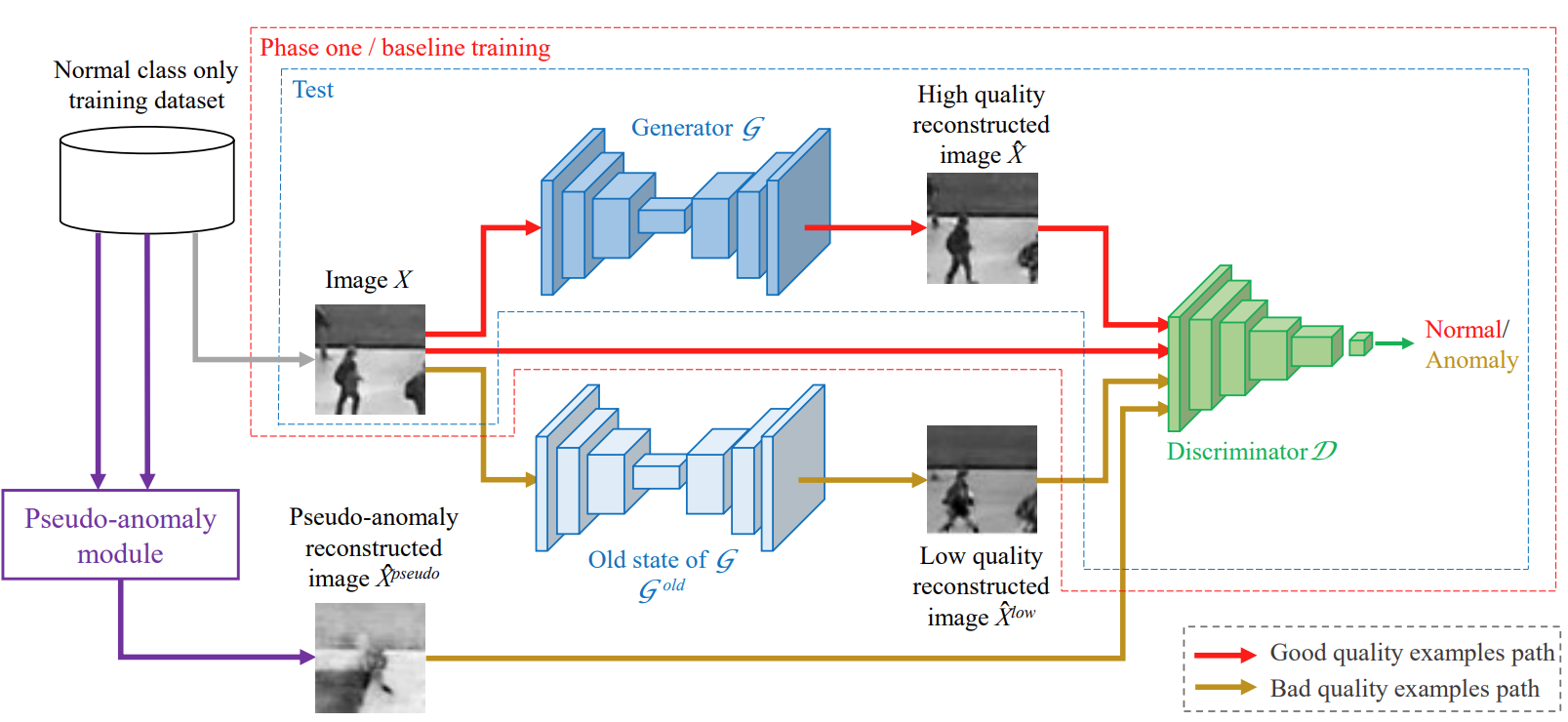Old is Gold: Redefining the Adversarially Learned One-Class Classifier Training Paradigm
A popular method for anomaly detection is to use the generator of an adversarial network to formulate anomaly scores over reconstruction loss of input. Due to the rare occurrence of anomalies, optimizing such networks can be a cumbersome task. Another possible approach is to use both generator and discriminator for anomaly detection. However, attributed to the involvement of adversarial training, this model is often unstable in a way that the performance fluctuates drastically with each training step. In this study, we propose a framework that effectively generates stable results across a wide range of training steps and allows us to use both the generator and the discriminator of an adversarial model for efficient and robust anomaly detection. Our approach transforms the fundamental role of a discriminator from identifying real and fake data to distinguishing between good and bad quality reconstructions. To this end, we prepare training examples for the good quality reconstruction by employing the current generator, whereas poor quality examples are obtained by utilizing an old state of the same generator. This way, the discriminator learns to detect subtle distortions that often appear in reconstructions of the anomaly inputs. Extensive experiments performed on Caltech-256 and MNIST image datasets for novelty detection show superior results. Furthermore, on UCSD Ped2 video dataset for anomaly detection, our model achieves a frame-level AUC of 98.1%, surpassing recent state-of-the-art methods.
PDF Abstract CVPR 2020 PDF CVPR 2020 Abstract




 MNIST
MNIST
 Caltech-256
Caltech-256
